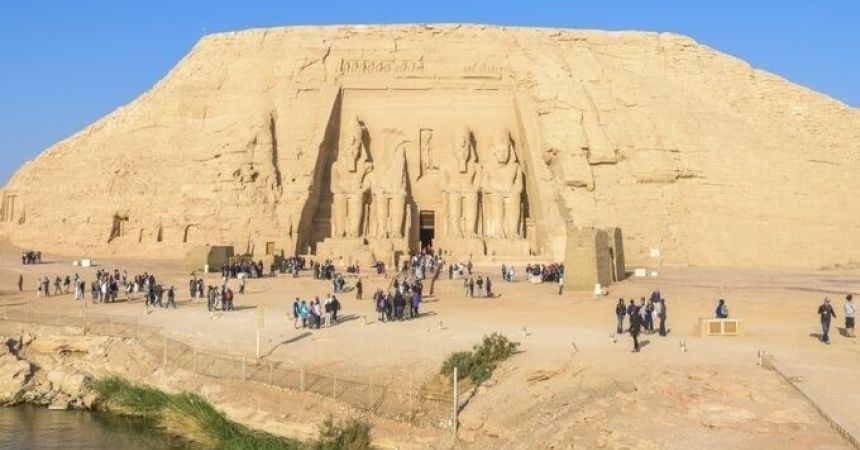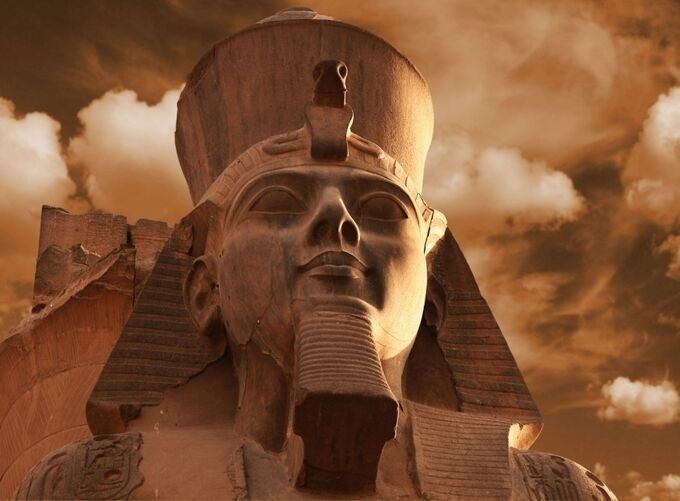
The Seven Wonders of the World Explained
The Seven Wonders of the World are a collection of extraordinary monuments and natural phenomena, each embodying human ingenuity, creativity, and the awe-inspiring beauty of nature. These wonders, whether ancient or modern, have fascinated travelers and historians for centuries, standing as symbols of architectural brilliance, engineering mastery, and cultural significance. In this blog, we will explore the traditional wonders, the modern additions, and the natural spectacles that continue to capture the imagination of millions.
The Great Pyramid of Giza (Egypt)
Visiting The Great Pyramid of Giza is the oldest and the only remaining wonder of the original Seven Wonders of the Ancient World. Built as a tomb for the Pharaoh Khufu around 2560 BCE, this massive structure is a testament to ancient Egyptian engineering and architectural brilliance.
Construction and Design
The pyramid, once covered in polished limestone that reflected the sun’s rays, is made of over two million limestone blocks, each weighing between 2.5 to 15 tons. Despite the limitations of ancient tools, the Egyptians created a structure that stood at an impressive 146.6 meters (481 feet) tall. The precise alignment of the pyramid with the cardinal points of the compass is another aspect of its mystique, showing an advanced understanding of mathematics and astronomy.
Cultural and Historical Significance
The pyramid was more than just a tomb; it was part of a larger necropolis, which included smaller pyramids, temples, and causeways, symbolizing the power and divinity of the Pharaoh. Over millennia, it has become a symbol of the grandeur of ancient Egypt, attracting millions of visitors each year.
The Colosseum (Rome, Italy)
The Colosseum, also known as the Flavian Amphitheater, is one of the greatest works of Roman architecture and engineering. Completed in 80 CE under Emperor Titus, the Colosseum was designed to host gladiatorial games, animal hunts, and public spectacles. Today, it stands as an enduring symbol of ancient Rome’s grandeur.
Architecture and Engineering
The Colosseum is an elliptical structure that could hold up to 80,000 spectators. Its design, with multiple levels of seating, arches, and columns, allowed for easy crowd movement and excellent visibility. The arena floor could be flooded for mock naval battles, and it featured an elaborate system of trapdoors for dramatic entrances of gladiators and animals.
Cultural Importance
The Colosseum was a place where life and death played out as entertainment, reflecting the values and power of the Roman Empire. It symbolizes both the glory and the brutality of ancient Roman civilization. Today, it is a UNESCO World Heritage site and one of the most visited attractions in Italy.
The Great Wall of China (China)
Stretching over 13,000 miles, the Great Wall of China is an ancient series of walls and fortifications, built between the 7th century BCE and the 17th century CE, primarily to protect China from invasions. It stands as a symbol of China's resilience and enduring strength.
Construction and Purpose
The wall is made of various materials, including stone, brick, tamped earth, and wood, depending on the region. The most famous sections, built during the Ming Dynasty, are made of stone and brick. The wall was designed not just as a defensive structure but also as a means of controlling trade and immigration along the Silk Road.
Cultural and Symbolic Value
The Great Wall represents the unity and determination of the Chinese people to defend their homeland. Its iconic status in global culture and its sheer scale make it one of the most recognizable structures in the world, drawing millions of visitors annually.
Machu Picchu (Peru)
Machu Picchu, often called "The Lost City of the Incas," is a 15th-century Inca citadel located high in the Andes Mountains of Peru. This mystical archaeological site was largely unknown to the outside world until its rediscovery by American explorer Hiram Bingham in 1911.
Architecture and Engineering
The site is a marvel of Inca engineering, with terraces carved into the steep mountainside, sophisticated irrigation systems, and stone structures that have stood the test of time without the use of mortar. The Intihuatana stone, which is believed to have been used as an astronomical clock or calendar, highlights the Incas’ advanced knowledge of astronomy.
Cultural and Historical Significance
Machu Picchu was likely a royal estate or a religious site, offering stunning views of the surrounding mountains and valleys. It is a UNESCO World Heritage site and one of the most visited attractions in South America, symbolizing the greatness of the Inca Empire.
Christ the Redeemer (Rio de Janeiro, Brazil)
Standing tall over the city of Rio de Janeiro, Christ the Redeemer is one of the most iconic statues in the world. This massive statue of Jesus Christ was completed in 1931 and has since become a symbol of Christianity and peace.
Construction and Design
The statue stands 98 feet tall (excluding its 26-foot pedestal) and spans 92 feet from hand to hand. It is made of reinforced concrete and soapstone, materials chosen for their durability. Located atop the 700-meter-high Corcovado Mountain, Christ the Redeemer offers panoramic views of Rio de Janeiro.
Cultural Importance
Christ the Redeemer represents Brazil’s strong Christian faith and the country’s welcoming, peaceful nature. It is one of the New Seven Wonders of the World and attracts millions of tourists and pilgrims each year.
Petra (Jordan)
Trip to Petra, known as the "Rose City" for its pink-colored stone, is an ancient city carved into the cliffs of southern Jordan. This archaeological wonder, once the capital of the Nabataean Kingdom, is renowned for its rock-cut architecture and sophisticated water management system.
Architecture and Engineering
The most famous structure in Petra is Al-Khazneh (The Treasury), a massive tomb carved into a sandstone cliff. Petra’s narrow Siq (canyon) entrance adds to its mystery and allure. The city’s water channels, cisterns, and reservoirs demonstrate the Nabataeans' advanced engineering skills, which allowed them to thrive in the harsh desert environment.
Cultural and Historical Significance
Petra was a vital crossroads for trade routes linking Arabia, Egypt, and the Mediterranean. Its strategic location and intricate architecture have earned it recognition as a UNESCO World Heritage site, and it continues to fascinate archaeologists and travelers alike.

Taj Mahal (Agra, India)
The Taj Mahal, a symbol of eternal love, is one of the most famous and beautiful buildings in the world. Built between 1632 and 1653 by the Mughal Emperor Shah Jahan in memory of his beloved wife Mumtaz Mahal, this stunning white marble mausoleum stands on the banks of the Yamuna River in Agra, India.
Architecture and Design
The Taj Mahal is a masterpiece of Mughal architecture, blending elements of Islamic, Persian, and Indian design. Its central dome, intricate inlay work, and perfectly symmetrical gardens reflect the emperor’s deep love and grief. The marble façade changes color with the light, giving the monument an ethereal quality at different times of day.
Cultural Importance
The Taj Mahal is more than just a mausoleum; it is a symbol of the enduring power of love. It is also a UNESCO World Heritage site and attracts millions of visitors from around the world each year, making it one of the most recognizable and visited monuments in India.
The New Seven Wonders of the World
In 2007, a global poll conducted by the New7Wonders Foundation led to the selection of the New Seven Wonders of the World, acknowledging the wonders that have survived or been built since ancient times. The new list includes:
- The Great Wall of China (China)
- Petra (Jordan)
- Christ the Redeemer (Brazil)
- Machu Picchu (Peru)
- Chichen Itza (Mexico)
- The Colosseum (Italy)
- Taj Mahal (India)
These wonders highlight the diversity of human achievement across different cultures and eras, each telling a unique story of civilization’s triumphs.
Honorable Mentions: Natural Wonders
While man-made wonders captivate the imagination, the world is also home to natural wonders that leave an equally powerful impact on those who witness them. Here are a few natural wonders that deserve a mention:
The Grand Canyon (USA)
Carved by the Colorado River, the Grand Canyon is a breathtaking natural wonder, stretching over 277 miles and reaching depths of more than a mile. Its layered red rock formations reveal millions of years of geological history.
The Great Barrier Reef (Australia)
The largest coral reef system in the world, the Great Barrier Reef is a vibrant underwater ecosystem teeming with marine life. Stretching over 1,400 miles, it is one of the most biologically diverse places on Earth.
Mount Everest (Nepal/Tibet)
As the highest peak in the world, Mount Everest stands at 29,032 feet above sea level. It has become a symbol of human endurance and the quest for adventure, attracting climbers from all over the globe.
Victoria Falls (Zambia/Zimbabwe)
Known as "The Smoke That Thunders," Victoria Falls is one of the largest and most dramatic waterfalls in the world. It offers a mesmerizing sight as the Zambezi River plunges over the cliff edge into a gorge, creating a powerful mist and roar.
Egypt Holiday: Discover Ancient and Modern Treasures
The Seven Wonders of the World, whether ancient or modern, man-made or natural, serve as reminders of the incredible achievements of humankind and the breathtaking beauty of our planet. They inspire awe, curiosity, and a sense of adventure, drawing visitors from every corner of the globe. These wonders, each with its own history and significance, invite us to appreciate the ingenuity of past civilizations and the enduring beauty of the natural world. Whether you are a traveler, historian, or simply a dreamer, the Seven Wonders of the World offer endless inspiration and a deeper connection to our shared human heritage.



